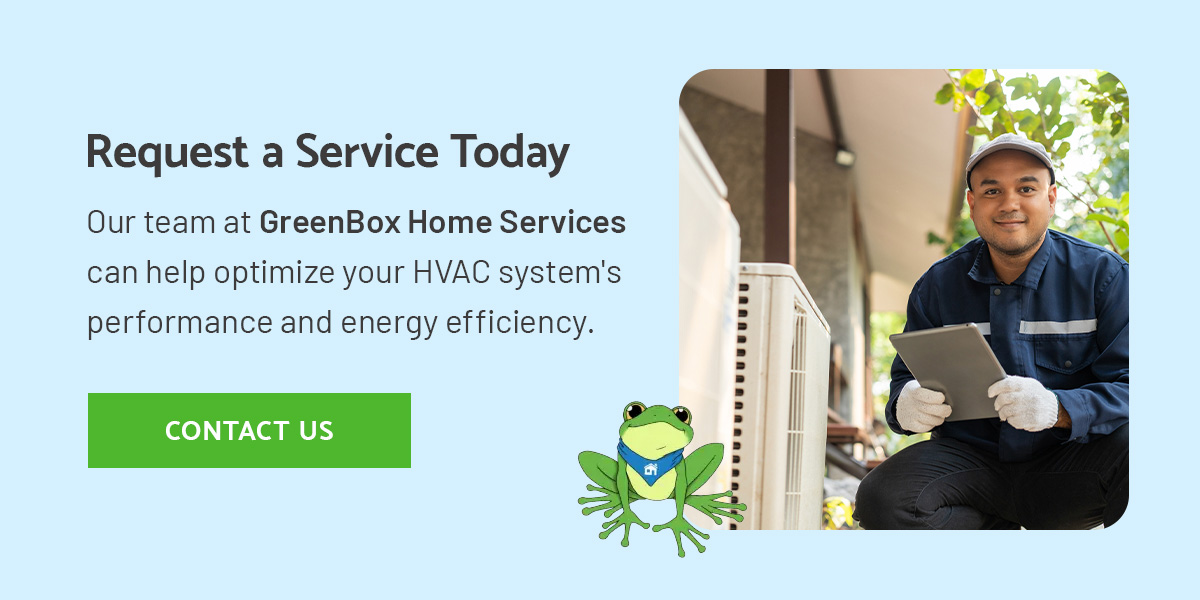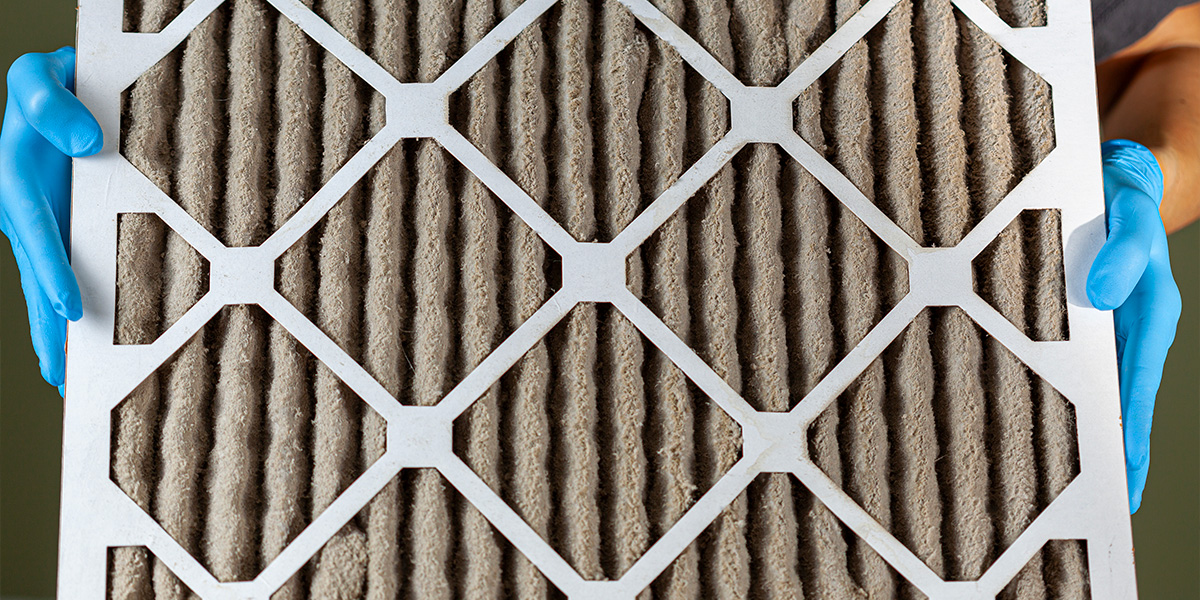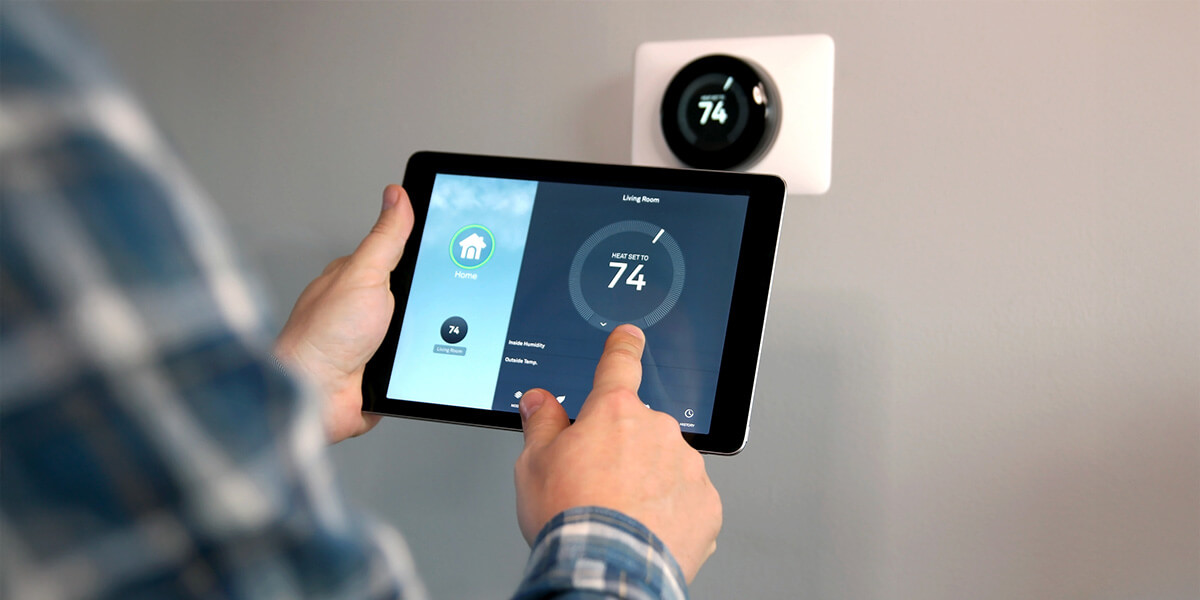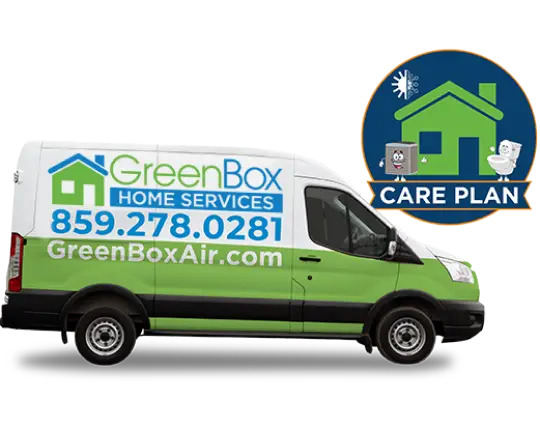
Your heating and air conditioning systems work hard every day to maintain comfortable temperatures in your home. Naturally, they expend significant energy, which can drive up your monthly utility bills.
A few strategies can help you manage these expenses — all while sustaining your home’s comfort and minimizing your environmental impact. Learn how to save on heating bills and air conditioning costs with these simple yet effective tips.
Adjust Your Thermostat Settings
Did you know you can save up to 10% annually on heating and cooling costs just by turning your thermostat back 7-10 degrees from its normal setting for eight hours a day? By lowering the temperature difference between your home and the outdoors, you reduce the amount of work needed from your heating or cooling system, yielding considerable energy savings over time.
During the colder months, consider setting the thermostat to 68-70 degrees Fahrenheit while you are awake, then reducing it while you’re sleeping or away from your home. Use a similar approach in summer — keeping your house warmer than usual when you’re away, then setting the thermostat to a comfier temperature when you’re home.
While you can adjust your thermostat manually, investing in a smart programmable thermostat offers more convenience. You can create automatic temperature settings based on your daily routine, heating and cooling needs, and typical weather conditions. Some benefits of upgrading to a smart thermostat include:
- Ease of use: A smart thermostat learns your temperature preferences based on your regular habits, meaning you don’t have to adjust it manually. As you leave and return to your home each day, the device adjusts the temperature to keep your space comfortable without wasting energy when you’re away.
- Energy savings: Smart thermostats can save around 8%, or $50, of heating and cooling costs yearly.
Inspect and Replace Air Filters Regularly
Never underestimate the impact of air filter maintenance when it comes to saving money on AC and heating costs. A dirty, clogged filter impedes airflow, forcing the system to work harder to heat or cool your home and wasting energy.
Try to check and clean the air filter once a month, particularly during heavy-use seasons like summer and winter. A clean filter prevents dirt and dust from accumulating in the system, helping avoid premature failure and expensive repairs. ENERGY STAR recommends a filter change at least every three months.
A few signs may indicate a need for an immediate filter change:
- Visible dust and debris
- Reduced airflow from vents
- Strange noises, such as whistling or rattling
- Increased allergy symptoms in you and other family members, like coughing, sneezing and watery eyes
- A musty, stale odor
- Higher energy bills
Lower the Water Heater Temperature
Considering a water heater accounts for around 18% of a home’s energy usage — and is usually the second-largest energy expense — it’s easy to see how lowering the temperature can save long-term costs.
Reducing your water heater’s temperature lowers the energy required to heat water. It also decreases standby loss, the amount of heat the unit loses to the surrounding environment, even when it’s not being used. Lowering the thermostat causes the water heater to cycle less frequently, meaning it uses less energy to maintain the desired temperature.
While some water heater manufacturers set thermostats at 140 degrees Fahrenheit, the average home only requires a temperature of 120 degrees Fahrenheit. A water temperature of 140 poses the risk of scalding, and it can waste money in standby heat losses each year. A lower setting also helps delay mineral buildup and corrosion in the water heater and pipes.
Besides turning down your water heater thermostat, there are other ways to lower your heating bills:
- Limit your hot water use as much as possible.
- Insulate your water heater and pipes.
- Opt for a newer, more efficient water heater model.
Invest in Energy-Efficient HVAC Systems
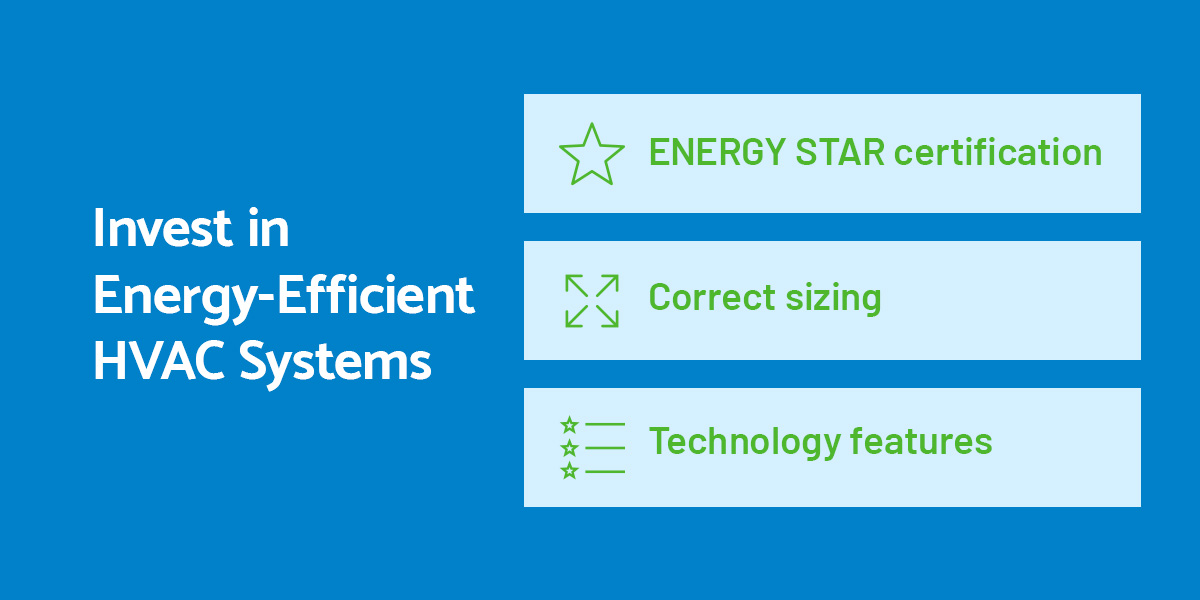
Choosing a more energy-efficient model helps reduce energy costs, improve comfort and lower your overall carbon footprint. These systems are designed to consume less energy while achieving the same cooling and heating output, lowering your utility bills and greenhouse gas emissions. As a bonus, they tend to last longer and require fewer repairs, further contributing to long-term savings and environmental sustainability.
Some key qualities to look for in new heating and cooling systems include:
- ENERGY STAR certification: Look for a model with the ENERGY STAR label. ENERGY STAR-certified products meet rigorous energy-efficiency guidelines set by the Environmental Protection Agency (EPA).
- Correct sizing: Choosing an accurately sized system for your home is critical. An oversized unit will cycle on and off more frequently, wasting energy and wearing down parts faster. An undersized system will struggle to maintain the desired temperature, causing it to work harder, wear out sooner and increase your energy bills exponentially. The ideal system size depends on your home’s size and how often you’ll use the unit. An experienced HVAC contractor can perform a load calculation to help you determine the proper size.
- Technology features: Modern technologies — such as smartphone integration and smart thermostat compatibility — have enhanced heating and cooling system performance. Choosing a model that supports these features can help improve your system’s efficiency, control your home’s temperature and reduce energy bills.
FAQs
We’ve answered some common questions about saving energy and heating and cooling costs.
How Do I Know When to Replace My Heating or Cooling System?
Certain factors can indicate that your current system is inefficient or nearing the end of its lifespan:
- Aging equipment: As a rule of thumb, if your air conditioner or heat pump is more than 10 years old, it’s likely time to replace the unit.
- Reduced efficiency: If your system requires frequent repairs and your bills are increasing, chances are your unit has become less efficient and could benefit from a replacement.
- Inconsistent heating or cooling: If you notice that certain rooms in your house are too hot or cold, it could be due to equipment operational issues, inadequate insulation or duct problems.
- Abnormal sounds: Loud or unusual noises coming from your system, such as banging, rattling or grinding, are a red flag that may signal the need for replacement.
What Are the Benefits of Energy-Efficient HVAC Systems?
The long-term benefits of investing in energy-efficient heating and cooling systems include:
- Lower energy bills.
- Increased comfort.
- Better indoor air quality.
- Reduced environmental impact due to lower energy use.
- Longer equipment lifespan.
- Increased home value.
- Potential for rebates and incentives.
What Rebates Are Available for Energy-Efficient HVAC Systems?
You can often find rebates through:
- Federal tax credits: Federal tax credits are available for energy-efficient home upgrades, including HVAC systems. They can help you offset the cost of buying and installing a new system.
- Utility companies: Several utility companies offer their customers rebates based on the HVAC system’s efficiency ratings.
- State and municipal governments: Some state and local governments provide tax incentives and rebates for energy-efficient HVAC systems.
- Manufacturers: HVAC system manufacturers sometimes offer rebates on their energy-efficient products.
ENERGY STAR partners with some retailers and manufacturers to provide rebates on certified products. You can also use its rebate finder tool to seek out rebates in your area.
Request a Service Today
From tweaking your thermostat settings to investing in greener heating and cooling systems, there are various ways to save energy in your home. Our team at GreenBox Home Services can help optimize your HVAC system’s performance and energy efficiency through smart thermostat installation and repair, replacement and maintenance services for heating and air conditioning systems.
Whether you need AC preparation services to tackle the warmer months or smart home device installations, we’ve got you covered with comprehensive solutions. Contact us today to schedule a service with our expert technicians in central Kentucky.




